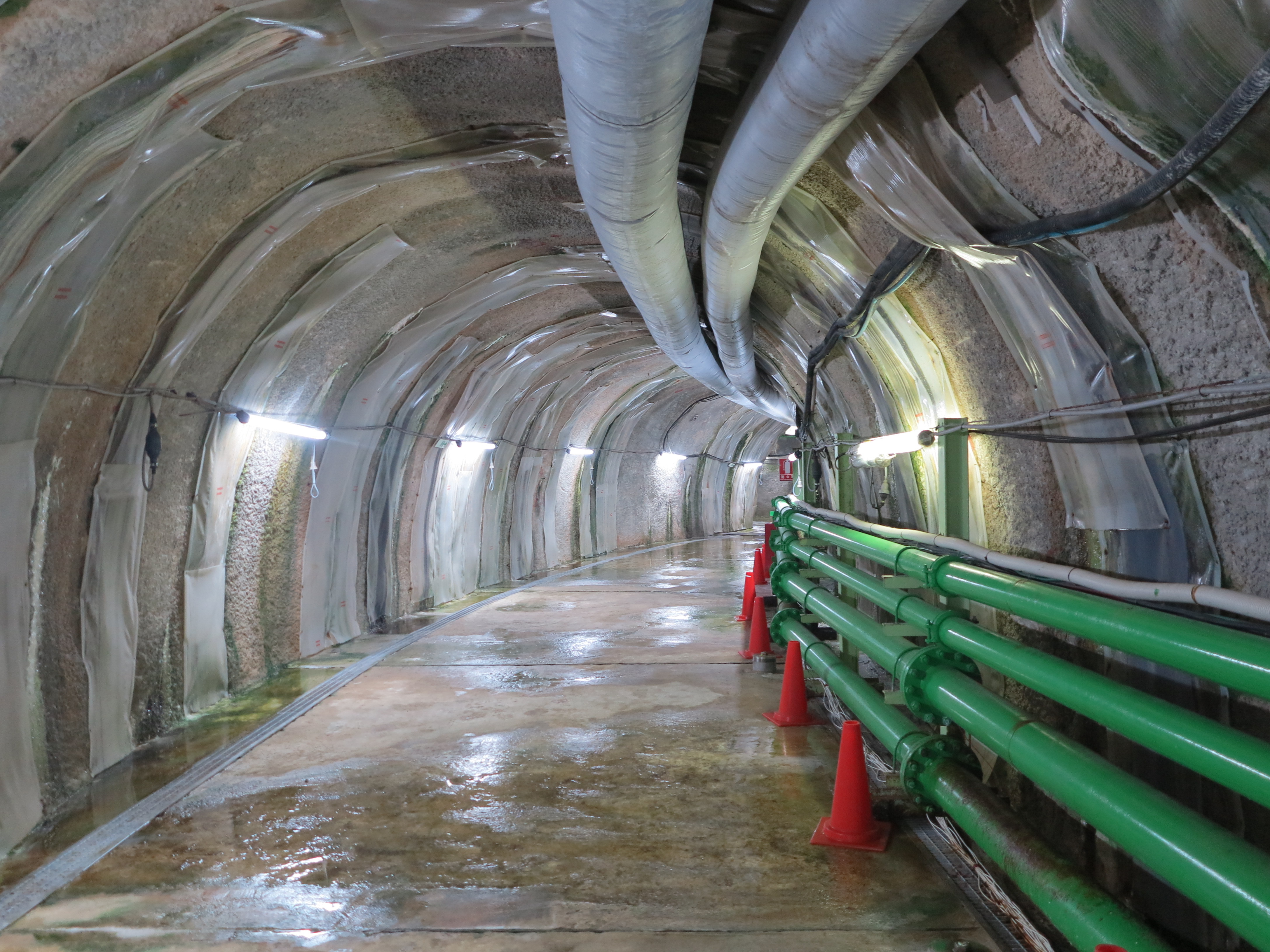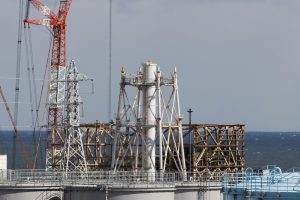March 11 marks the 10-year anniversary of the Fukushima Daiichi nuclear disaster, the most serious nuclear incident since the 1986 Chernobyl catastrophe. The accident at Fukushima debunked the myth of nuclear safety that had prevailed in Japan until that point. It also threw Japan’s nuclear infrastructure into a mess of uncertainty, forcing political elites to rethink the future of energy policy.
However, it is doubtful that Japan will fully abandon nuclear power. This is not the result of political agendas. Instead, it has to do with particular visions of how nuclear power affects energy policies in ways that go beyond matters of electricity.
Since 2013, I have studied public controversies surrounding nuclear power in a post-Fukushima Japan. I assisted state-sponsored conferences on the future of energy policies, visited nuclear R&D facilities, and interviewed economic bureaucrats, nuclear scientists, and state officials. I came to realize that pre-2011 visions associated with nuclear power and technologies still influence how Japan handles future uncertainties around energy policies. These four visions are linked with energy independence, “clean” energy, technical expertise, and international security.
Energy Independence
In post-war Japan, politicians perceived nuclear power as essential to the economic prosperity of the country. Nuclear power has been promoted since the 1950s through political agendas. Economic bureaucracies, such as the Ministry of International Trade and Industry, deployed vast resources to make nuclear energy a national priority for a country lacking natural resources. Indeed, Japan needed stable energy sources to pursue its post-war economic recovery policies of heavy industrialization. The 1973 oil crisis highlighted Japan’s dependency on outside sources of energy and cemented the necessity of nuclear power for Japanese elites. The creation of experimental breeder reactors designed to potentially extend the nuclear fuel supply chain equally entertained dreams of limitless energy.
For the state, nuclear power consequently became more than a matter of electricity; it stood as a symbol of the energy independence of a Japan on its way of becoming an economic juggernaut. Gradually, nuclear power became central to the post-war recovery, and was seen as representing a pillar of a strong modern nation state.
These tropes of energy independence were repurposed after Fukushima. In 2016, I attended a series of public talks produced by the Ministry of Economy, Trade and Industry (METI). The series was delivered all over the country and included prominent experts in business administration, economic critics, and policy planners. Delivered under the title, “Japan without resources, a symposium toward the shape of our future energy,” the speeches often presented nuclear power as a necessity, even after the 2011 disaster. Since nuclear power plants were closed after Fukushima, the symposia depicted Japan as being in a precarious situation in which the nation suffered from one of the highest levels of energy dependence in its history. Given trade disputes and long-term tense relations with neighboring Asian countries, many experts believed Japan needed to decrease its dependence on external energy suppliers. According to the symposia, nuclear power should be fully restarted as it provided a stable, Japanese-made energy supply. The subtext was clear and reminiscent of the 1973 oil crisis. Even after Fukushima, nuclear power is still seen not just as a way of producing energy, but also as a way of producing energy independence.
“Clean” Energy
In 1953, U.S. President Dwight Eisenhower launched the “Atoms for Peace” program. Part of a Cold War propaganda drive in the interest of U.S. geopolitical strategies, the program was officially dedicated to promote the peaceful pursuits of nuclear energy. U.S. political forces shifted the image of nuclear energy from a power that obliterated life to a beneficial power for the common world. They emphasized agricultural benefit, medical radioisotopes, and clean atomic energy.
In Japan, the nuclear era began in the 1960s, heavily influenced by this program. The Tokai nuclear power plant, Japan’s first commercial nuclear facility, was built during that decade. Coal and oil were depicted as archaic sources of energy, especially as nuclear power promised dreams of limitless energy, epitomized by the Monju project, a nuclear fuel reprocessing facility which was supposed to close the loop of the nuclear fuel cycle. Nuclear power was depicted as the “clean energy of the future,” as emphasized by a billboard sign in the town of Futaba, near the now crippled reactor of Fukushima.
The release of radioactive pollutants after Fukushima tarnished the trope of nuclear power as a source of clean energy. Yet, Japanese elites and proponents of nuclear power are now resorting to a similar rhetoric, this time based on the specter of global warming. Following the moratorium of nuclear power after 2011, Japanese elites and scholars have argued that emissions of carbon dioxide have increased due to reliance on fossil fuels. In this, global warming is increasingly depicted as a threat that nuclear power can ward off.
With plans of having a carbon-free Japan by 2050, proponents of nuclear power will keep pushing nuclear energy as a clean source of energy. Japan’s current energy policy relies on an energy mix in which 20-22 percent of the produced energy would come from nuclear power by 2030. Former tropes of nuclear power as a source of clean energy have not disappeared, but have been redeployed in the context of global warming.

An R&D facility for the safe geological disposal of high-level radioactive waste. Photo by Maxime Polleri.
Technical Expertise
In Japan, nuclear technology was introduced via the international “Atoms for Peace” program, which promised wonders in the domain of scientific research. In the decades that followed World War II, Japan became a pioneer in technological expertise, echoing the pre-war motto of “Japanese spirit and Western techniques.” Young post-war Japanese dutifully followed the adventure of Astro Boy, the fictional little android powered by nuclear power. Astro Boy, whose Japanese name is Mighty Atom, encapsulated the dominant narrative of nuclear growth, in which nuclear power became associated with a domain of technological wonder and amazement, rather than with the emotional scars of atomic bombings.
In this context, nuclear-related infrastructure was a domain of technical expertise, of which the Japanese scientist could be proud. Before Fukushima, Japan had one of the most well-respected nuclear and radiological scientific communities in the world, with the country being part of a nuclear power industry revival known as the nuclear renaissance.
Fukushima dealt a harsh blow to this reputation for expertise, causing the nuclear community to adopt a pessimistic vision about the future of nuclear research. Scientists to whom I spoke during my fieldwork shared the common fear that promising students might not come to work in nuclear-related research after this disaster. Throughout the energy symposia that I attended, the absence of Japan’s technical prowess in the nuclear domain was associated with negative consequences for technological competition and innovation. Speakers described Japan as being behind South Korea in terms of innovation, and said that it risked losing expertise to China.
Before Fukushima, Japan had bet big on the creation of a state-of-the-art R&D facility for the safe geological disposal of high-level radioactive waste. Similarly, METI has attempted to transform the coastal region of Fukushima into an “innovation coast,” by developing a strong R&D base around radiation monitoring and reactor decommission technology. These projects remain viable through a thriving Japanese nuclear industry and technical expertise. While the electrical contribution of nuclear power might not be a realistic energy baseload, the technological expertise linked with nuclear technology is still something widely cherished by Japanese elites.

A prototype for an R&D project on radiation monitoring. Photo by Maxime Polleri.
International Security
During the post-war American occupation, the U.S. prohibited nuclear science in Japanese society. However, the geopolitics of East Asia changed drastically in the 1950s and so did the politics of nuclear power. The first Soviet nuclear test in 1949, the rise of communist China, and the Korean War marked the beginning of the period of geopolitical tension known as the Cold War. Under this pressure, transforming Japan into a nuclear ally would strengthen the strategic nuclear balance of the United States, by showing that an American partner could make nuclear weapons if the need ever arose. Wary of the rise of communist powers threatening the values of the liberal international order, the United States introduced nuclear power in Japan: this time not in the form of a bomb, but under the promise of peaceful nuclear energy.
Nowadays, it is well known that Japan has the capacity to nuclearize itself. Nuclear arsenal proficiency was even supported in 1994, when Prime Minister Hata Tsutomu famously said, “it’s certainly the case that Japan has the capability to possess nuclear weapons but has not made them.”
While Fukushima was a catastrophic event for Japan, it did not ease the tense relationships that the archipelago maintains with neighboring Asian countries. The rise of a militaristic China, the ongoing Senkaky/Diaoyu Islands disputes, and the firing of North Korean missiles over Japanese waters have given Japan’s national defense policy a new makeover. Within this context, a non-nuclear Japan risks destabilizing the global strategic nuclear balance and the geopolitics of East Asia. With many of its neighbors growing more influential, Japanese elites and proponents of the liberal international order will probably want to conserve Japan’s technical ability in the nuclear domain, so as to maintain regional and international security.
Nuclear Tropes
Fukushima led to surface level political posturing and indecision around energy matters, but the obdurate, enduring, and historically entrenched tropes that surround nuclear power have barely budged. Paying too much attention to the words of politicians can be a distraction from this path dependency.
It is important to state that these tropes are not completely widespread across Japanese society. Indeed, there was always an important anti-nuclear movement within a part of the population. Nonetheless, these tropes are particularly present within economic bureaucracies like METI that have control over major policy areas. Ten years after Fukushima, nuclear power is still considered a key factor in issues surrounding energy security, global warming, technological expertise, and international security.
These issues did not emerge out of the blue; they were shaped by certain historical, cultural, and political contexts, which still influence the prevailing Japanese vision and future of nuclear power. This legacy represents deeper structural factors that supersede hectic changes in political parties, matters of economic solvability, and the potential adverse health effects linked with radioactive contamination. It also explains why Japan might not quit nuclear power.
Understanding the future direction of energy politics, whether in Japan or elsewhere, means looking at how past elements remain in dialogue with current events, often creating long-lasting influences on the governance of nuclear power. Creating novel and more sustainable energy policies might consequently require the toppling of enduring tropes that continue dominate our worldviews.
Dr. Maxime Polleri studies the governance of risk and recovery in the aftermath of disasters and public health crises. He is currently a postdoctoral researcher at McGill University in the Biomedical Ethics Unit within the Faculty of Medicine. He is also a Network Affiliate at the Center for International Security and Cooperation at Stanford University, where he was previously a MacArthur Nuclear Security pre- and post-doctoral fellow.
































